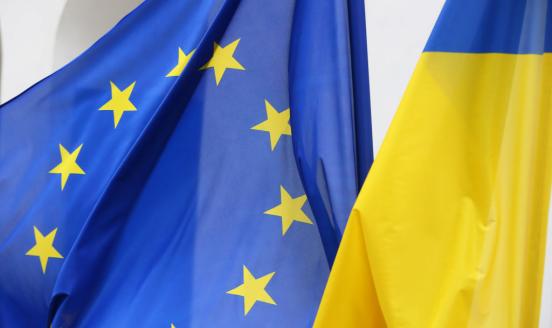Monetary arithmetic and inflation risk
Between 2007 and 2020, the balance sheets of the European Central Bank, the Bank of Japan, and the Fed have all increased about sevenfold. But inflati

Fiscal and monetary policy responses to the 2007-2009 global financial crisis (GFC) and the 2020-2021 COVID-19 crisis led to rapid increases in public debt and central bank balance sheets in most advanced economies. However, inflation remained at record-low levels until early 2021. At first glance, this looks like an invalidation of the identities that describe the relationship between money supply and inflation. This entails the risk of over-optimism: downplaying inflation risks in economic policy debates could have negative macroeconomic consequences. In fact, the monetary arithmetic has not stopped working. Rather, changed parameters must be correctly understood, in particular in the context of increased engagement of central banks in public debt financing.
Three identities (equations that remain valid though the values of variables may change) describe the relationships between money supply, money demand and inflation.
The first illustrates the impact of changes in the stock of broad money (money supply) and money velocity on inflation:
MV = PQ
where M = stock of broad money (money supply), V = money velocity, P = price level, Q = output (real GDP).
The fractional-reserve banking system determines M in the money multiplication process, so one must analyse the link between central-bank money and broad money. This is the subject of the second identity:
M = φMh
where Mh = monetary base, φ = money multiplier
Finally, the level of φ is described by the third identity:
φ = (cd + 1)/(cd + rd)
where cd = CU/D, rd = R/D, CU = currency in circulation, R = reserves (mandatory and voluntary/ excess), D = deposits (demand and time).
How can the low inflation/rapidly expanding monetary base puzzle be explained?
Since the GFC, the main central banks have expanded their balance sheets dramatically, chiefly due to quantitative easing. The COVID-19 crisis has further intensified various asset purchase programmes. According to the IMF International Financial Statistics, the balance sheets of the European Central Bank, the Bank of Japan and the Fed have all increased about sevenfold. But inflation stayed low throughout the 2010s (Figure 1).
Thus, the relatively stable relationship between the stock of money and inflation and other economic variables observed in the past seems to have recently disappeared. However, the monetary arithmetic remains valid. A rapid expansion of central bank balance sheets in key currency areas and the resulting rapid increase in the monetary base, without higher inflation, was possible thanks to decreasing V and φ.
V: The increasing demand for global currencies
Demand for broad money (which is, by definition, inversely related to V) has increased across all currencies, except for the British pound (Figure 2).
This increasing demand has come partly from the outside (ie from non-residents), given the increasing global role of key currencies and the tendency towards currency substitution in other currency areas, especially emerging-market economies, during periods of prolonged financial turmoil and associated macroeconomic uncertainty. For example, the increasing demand for the Swiss franc in the 2010s was caused by the flight to safe but liquid assets during the European financial crisis of 2010-2015.
Increased demand for money can also be explained by deleveraging and the precautionary saving of residents during the GFC and European crisis, and the consequences of economic stagnation.
COVID-19 has brought a new surge in demand for money balances (decrease in V) caused by the self-restrained behaviour of consumers and investors, by lockdowns and the prohibition of certain types of activities, by restrictions on the movement of people, and by closed borders and disrupted supply chains. Private spending has decreased, and private saving increased, justifying a new round of monetary expansion by central banks during 2020-2021.
Yet the deflationary shock during the COVID-19 crisis has been different to that experienced during the GFC. Economic agents could not spend on the goods and services they wanted to buy, meaning forced saving (flow) and monetary overhang (stock). The latter represents repressed inflation.
Forced saving and monetary overhang have been temporary, closely related to the stringency of lockdown measures. When lockdowns started to be relaxed in the first half of 2021, demand for money began to return to the pre-crisis level. This is probably a key factor explaining the inflation surge in most currency areas in the first half of 2021.
φ: The declining money multiplier and its determinants
There has also been a dramatic decline in φ in key currency areas (Figure 3). Among the reasons for this, one can mention the immediate consequences of the GFC, which damaged the process of financial intermediation for several years. Banks, other financial institutions, non-financial enterprises, and households had to repair their balance sheets, making them cautious about fresh borrowing and lending. In particular, commercial banks have preferred to retain additional liquidity and capital margins (beyond that required by prudential standards), rather than become engaged in risky lending.
Furthermore, since the GFC, regulatory authorities have seriously tightened the prudential norms for commercial banks and non-banking financial institutions, including the capital adequacy ratio and liquidity coverage ratio, anti-cyclical capital buffers, risk assessment methodology. A similar effect was delivered by fiscal instruments, such as taxes on banking transactions, introduced in several countries.
Finally, QE has also depressed φ, the effect of increased commercial banks deposits at central banks, which coincided with periods of QE intensification, such as in 2020 (Figure 4).
A comparison of Figures 3 and 4 suggests that rapid increases in commercial bank deposits at central banks have coincided with rapid decreases in φ. Increases have followed the launching/intensification of QE, that is, 2008-2013 in the US, 2015-2017 in the euro area, since 2012 in Japan, and 2020-2021 in all analysed currency areas. In contrast, when central banks have stopped or slowed down direct asset purchases (eg the Fed in 2014-2019 and the European Central Bank in 2012-2013 and 2017-2019), bank deposits at central banks have decreased and, as a result, φ has stabilised or (in the US) even increased somewhat.
A detailed understanding of this somewhat perverse effect of QE is hampered by a lack of sufficient empirical research on commercial banks’ responses to unconventional monetary policy measures. Probably, QE removed so many low-risk liquid securities from the financial market that commercial banks had to increase their voluntary deposits at central banks to meet their liquidity coverage ratios and manage their liquidity (despite negative interest rates on their deposits in the euro area and Japan).
A decrease in φ after the GFC can be explained by an increasing reserve-to-deposit ratio (rd; see the third identity). It was a combined effect of tighter prudential regulation, more conservative behaviour of commercial banks and other lending institutions, and QE. However, the second determinant of changes in φ, that is, the cash-to-deposit ratio (cd), also increased (Figure 5) in the US dollar and euro currency areas.
Higher demand for cash may look surprising considering the rapid development of electronic payments and policy efforts to reduce cash transactions. On the other hand, low inflation and low interest rates have reduced the opportunity costs of keeping money balances in a cash form.
Is higher inflation in 2021 a temporary phenomenon?
Most advanced economies, where vaccination rates are relatively high, relaxed their COVID-19 lockdown measures in the first half of 2021. This led to economic recovery, but accompanied by higher inflation in the US, large parts of the euro area and the United Kingdom (Table 1). Inflation in Japan and Switzerland remains low.
Higher inflation should not be surprising given the temporary character of ‘forced’ saving and monetary overhang during the early stages of pandemic, and their post-lockdown unfreezing. The critical question is whether this is a temporary phenomenon (after which inflation will go down) or the beginning of the period of higher inflation. Central banks in key currency areas believe in the first scenario (see here and here) and continue with current monetary policies. The IMF takes a similar tack.
But to identify whether low-inflation optimism is justified, the future dynamics of Mh, φ, and V should be assessed, especially in the context of continuing QE: avoiding the inflationary consequences of increased Mh would require further decreases in φ and V.
Regarding φ, it is difficult to find arguments for its further decline unless there is a new major banking crisis. Instead, financial intermediation should recover once the COVID-19 pandemic ends and commercial banks complete recapitalisation processes. Furthermore, if central banks stop QE or reduce their balance sheets, commercial banks may reduce their voluntary reserves deposited at central banks, contributing to increasing φ. Of course, the net impact on M can remain negative, but proportionally less than Mh reduction.
Continuation of a low V will depend, all other things being equal, on the resilience of low-inflation expectations. These are based on public trust in the determination and ability of central banks to deliver on their price stability mandates. There is certain inertia at work. More than three decades of low inflation have helped to anchor firmly these expectations in most advanced economies. Disanchoring will not happen immediately. However, inflation expectations will not stay low forever regardless of the course of monetary and fiscal policy and the current inflation record. Continuation of monetary and fiscal expansion against the first inflationary signals may undermine expectations.
Once expectations become disanchored, higher V could push inflation up, which will contribute to a further increase in V. It is challenging to determine the precise expectation breaking point but continuation of expansionary monetary policy and downplaying of inflation risk when inflation is on the rise almost everywhere brings such a breaking point much closer.
Furthermore, the revisions to monetary policies strategies completed by the Fed in August 2020 and ECB in July 2021 include declarations of ‘symmetric’ treatment of inflation targets. In practical terms, this means readiness to run/tolerate inflation ‘moderately’ above the target, following periods below the target. Such an announcement when inflation is on the rise (the case of ECB) may be taken by markets and the general public as a sign of central banks’ unwillingness to react firmly against price increases.
Increasing fiscal dominance
Expanded central bank balance sheets have become dominated by government bonds on the asset side. Such an effect of QE, even if initially unexpected and undesired, is unsurprising and unavoidable. QE absorbed the bulk of commercial papers and securities of sufficient quality and liquidity acceptable to central banks. Hence, a continuation of QE has required more reliance on government bonds, leading to an increasing share of the stock of general government debt holdings being held by central banks (except in Switzerland; Figure 6).
The eventual result is an increasing fiscal dominance, or in other words, a rising monetary policy dependence on fiscal policy. In practice, central banks may become hostage to fiscal authorities and their inability or unwillingness to carry out necessary and timely fiscal adjustments. In turn, this may create a severe obstacle to monetary policy tightening and reversal of QE when inflation pressure returns.
In such circumstances, central banks will be confronted with an increasingly difficult dilemma. Fulfilling their price stability missions will require first stopping QE and then reducing their balance sheets, while hiking interest rates. Curtailing QE and hiking rates will increase governments’ interest payments and further deteriorate their fiscal positions. Some governments may face sovereign insolvency risks, undermining the stability of their financial sectors and boosting inflationary expectations.
However, giving in to fiscal pressures would lead to higher inflation and undermine thus far stable inflationary expectations. Higher inflation could perhaps depreciate the real stock of public debt (if it had an unexpected character), but other economic and social consequences would be negative.
Adjusting to changing winds
For the last twenty years, monetary policy in advanced economies has been preoccupied with the fear of deflation, in a context in which deflationary forces were at work: savings surpluses in some emerging-market economies, disruption of financial intermediation after the GFC, consequences of financial regulation reforms, or, most recently, forced saving caused by COVID-19. These deflationary factors helped absorb, through decreasing V and φ, the effects of rapid expansion of central banks’ balance sheets (Mh).
However, it is unlikely that these deflationary factors will continue working. Monetary authorities must be ready to react to an inflationary rather than a deflationary environment, even if it does not materialise immediately. Downplaying inflation risk and overconfidence that price increases in 2021 have only a temporary character can lead to a rise in inflation expectations and V. If that happens, fighting inflation will become more costly, economically and politically.
Governments and central banks must consider all of the relationships between monetary and fiscal policies, particularly the role of interest rates close to zero and massive QE in lowering public debt-service costs. When the time comes for monetary policy tightening, either by increasing interest rates, downsizing central bank balance sheets, or both, government interest payments will increase substantially, putting debt sustainability at risk, especially in highly indebted countries. Better would be to start a gradual fiscal adjustment soon while government bonds yields are still low. In addition, early fiscal adjustment will increase monetary policy’s room for manoeuvre and help it fight potential inflationary pressures.
Recommended citation:
Dabrowski, M. (2021) ‘Monetary arithmetic and inflation risk’, Bruegel Blog, 27 September



